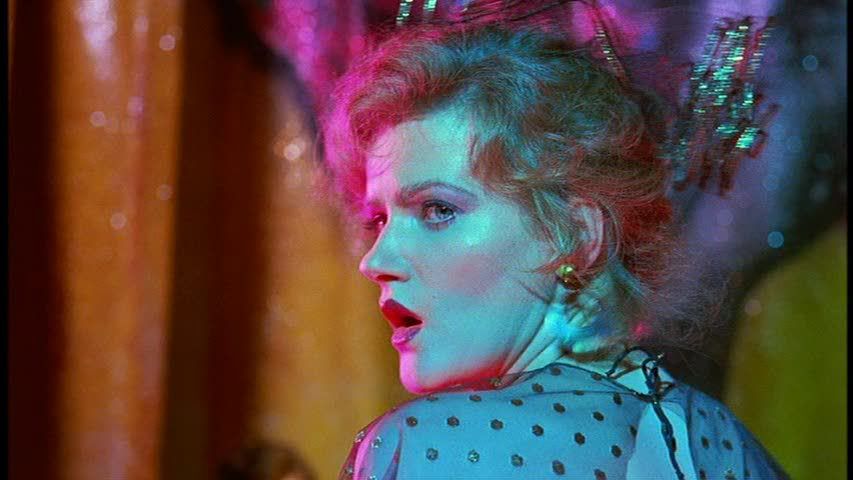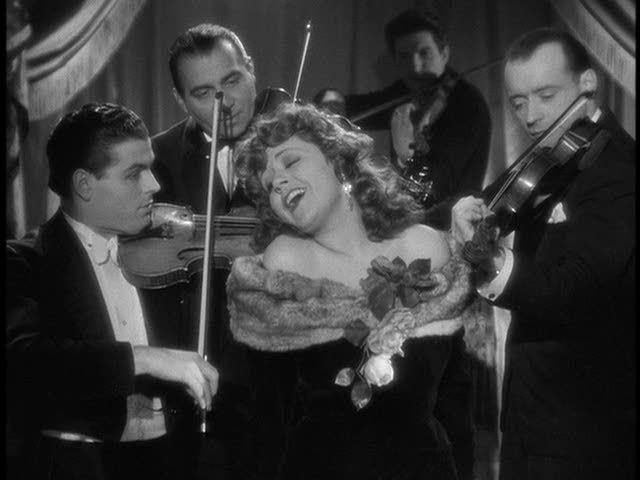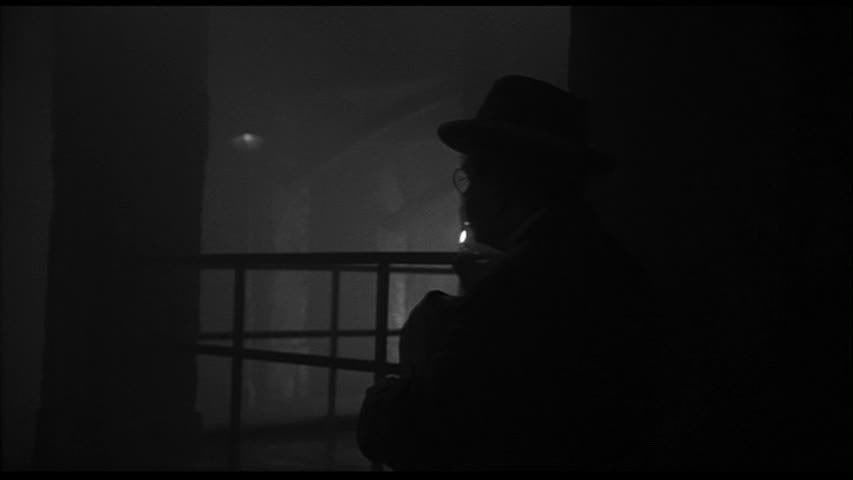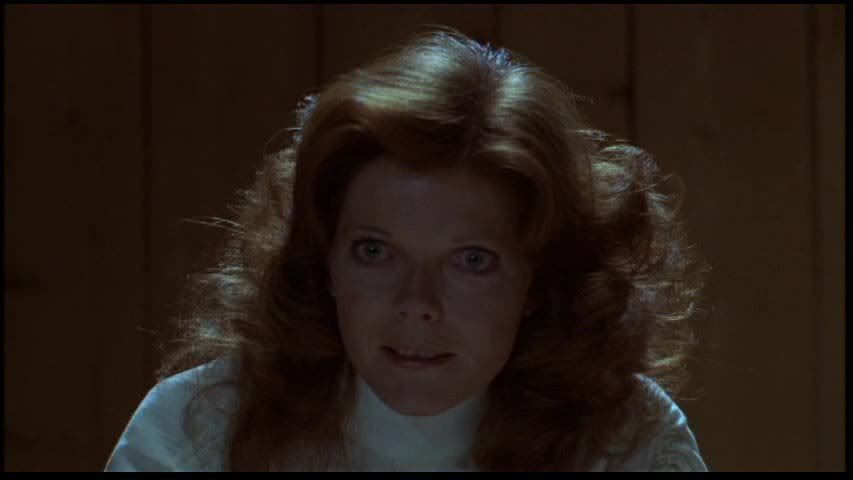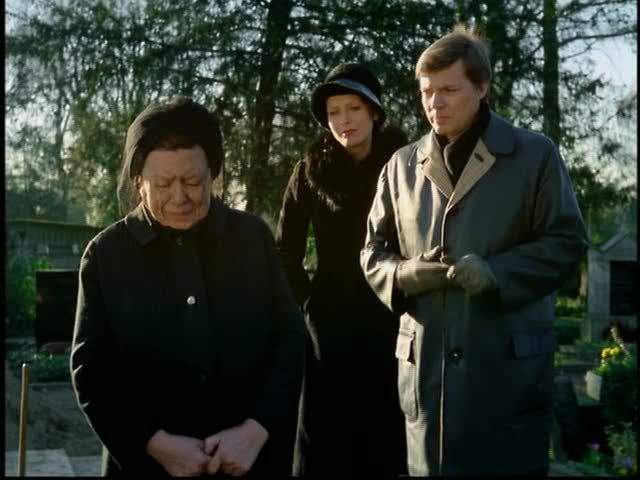
Tim Burton's version of the Stephen Sondheim musical Sweeney Todd is a devilishly clever, funny, and creepy ode to misanthropy and vengeance. The title role is the barber Benjamin Barker (Johnny Depp), who renames himself Sweeney Todd after a lengthy enforced absence from London. He was exiled from his home by the powerful Judge Turpin (Alan Rickman), who coveted Barker's beautiful wife, and upon Barker's return over a decade later, he finds that his wife has killed herself and their daughter has been adopted and virtually imprisoned by the judge. He swears vengeance on the judge, and sets up a new barber shop above the decrepit pie shop run by the widow Mrs. Lovett (Helena Bonham Carter). In the course of this vengeful quest, though, his hatred of the judge gradually spreads to the entire human race, and he unleashes a killing drive to rival the most vicious screen serial killers.
It's an unlikely subject for a musical, and though I haven't seen the original staging, Burton's adaptation does a fairly good job of balancing the macabre with the ludicrous, deftly positioning his film between horror and comedy. At the start, though, the production is a bit shaky, and the treatment of the musical numbers initially uncertain and awkward. The opening titles, with their video-game CGI effects, aren't the most promising introduction, but thankfully Burton tones down the CGI throughout most of the film. A few more wide shots of period London are equally distracting, and in an early scene he attempts a rapidly paced tour through the streets of this CGI town, which is badly mangled and so chintzy that it nearly derails the whole opening. Thankfully, once the film settles into interiors, Burton is able to create the atmosphere much more organically, with subtle elements of design and lighting, rather than resorting to entirely computer-created environments.
The opening also falters a bit in the translation of the Sondheim song book from stage to screen. The first musical number takes place in the very first scene after the credits, as Sweeney Todd arrives back in London on a ship. Todd is initially off-camera, and the focus is on the youthful sailor Anthony (Jamie Campbell Bower), who sings an impassioned ode to London's joys. He's interrupted when Todd suddenly steps forward, taking over the foreground of the shot, and presents a much darker vision of London: "There's a hole in the world like a great black pit/ and the vermin of the world inhabit it." This is a perfect translation of the stage dynamic into cinematic visuals, allowing Todd's face to enter the frame and physically blot out Anthony just as his darker worldview pervades the narrative. But the rest of this number is handled much more clumsily, with the editing chopping up the song and switching in between lines to slightly different angles on Todd's face. Whereas the first entrance of Todd is deftly handled with a real awareness of space and framing, the rest of the scene disrupts this spatial care by pointlessly switching angles and cutting around the central figure as he sings. Musical numbers inevitably work best when there's a sense of space and movement built into them, and Burton's unmotivated cutting only calls attention to the lack of spatial definition in this scene. His edits here seem intended only to get "cool" angles on Depp's perpetually photogenic face, not to preserve the flow of the scene or the song.
Fortunately, once Todd arrives at Mrs. Lovett's pie shop, things get much better, and much smoother. It's even easy to forget about Depp's substandard singing voice when the musical numbers are so much fun, and the diabolical wit of the lyrics stings with practically every line. The introduction of Helena Bonham Carter, looking her frizzed-out, voluptuous, raccoon-eyed Marla Singer best, is also very welcome. She infuses her role with world-weary pathos and casually pragmatic cruelty, and does a much better job than Depp with the vocal duties, to boot. From her very first number, "The Worst Pies in London," it's clear that she adds a much-needed sardonic edge to the film's brutality, a sense that the violence and ugliness of this film reflects a world of poverty, rigidly defined class structures, and common people sadly resigned to their fates. Only Sweeney Todd is truly discontented enough with his rotten lot in life to do anything about it, and he strikes out in the most hideous ways, his every horrifying act a reflection of the horrors inflicted upon him and his class by society.
Once Mrs. Lovett enters the narrative as Todd's foil and partner, the film soars, and the clumsiness of the opening few scenes is quickly forgotten. These two engage in wittily arranged numbers, like the scene where Todd sings a love song to his razors, while in the background the pitiful Lovett is pining for Todd, their lyrics occasionally joining in identical expressions of love for different objects. Even better are the deliriously naughty pas de deux numbers, like the one where Lovett concocts her fiendish plan for disposing of the bodies Todd leaves behind, and the duo twirl around the shop in a mad dance, bursting with excitement and energy. Their every appearance together is a real joy to watch, even in the potentially silly scene where Mrs. Lovett imagines an idyllic life with Todd by the sea — her hopeful pragmatism and his stoic gloominess provide a perfect counterpoint to the sunny skies and warm colors that are absent everywhere else in the film's grey and brown palette. There's not a scene between these two that doesn't sparkle with weird charm and vivacity, even when the subject of the songs is murder and cannibalism.
The film is less successful when it diverts from this central duo, which it thankfully doesn't do too often. Anthony has a perfunctory role as the wide-eyed innocent who falls for Johanna (Jayne Wisener), Todd's captive daughter, at first sight. His narrative of naïve young love is obviously the exact opposite of Todd's disillusionment with the world, and the film suggests that the only reason for Anthony's optimism is that he hasn't experienced enough yet. Give him time, and he'll head down that path as well. Even the young and beautiful Johanna is tainted by her captivity at the judge's home, and she holds out little hope by the end of the film that anything will ever be better, even once she escapes her tormentor's clutches. This love story is given short shrift in the film, though, and its brief diversions from the central Todd/Lovett plot are mostly unwelcome. Anthony's songs to Johanna may well be a parody of young love's excesses — and lines like "I'll steal you, Johnna" have more than a little tinge of creepiness — but the fact remains that they're saccharine and grating in comparison to the more vibrant Todd and Lovett numbers. It's therefore a good thing that this less interesting couple gets much less screentime, though the result is that their story winds up so under-developed that one wonders why they're here at all — presumably the original play fleshes out their story more fully.
Quibbles aside, Sweeney Todd is an excellent film, a nasty piece of work that fully submerges the audience into the vengeful rage of its protagonist. It's hilarious, disturbing, and blood-drenched, with a razor-sharp gallows humor that slices through nearly every scene, even the goriest ones. Burton has possibly the perfect sensibility for such a delicate balancing act, and as a result the film is witty and vibrant while never flinching away from the bloody physical realities of the violence, which is shown with an at-times nauseating physicality. This emphasis on the brutality of Todd's violence helps to ground the film's fantasy, to keep the flights of song and music rooted in a concrete reality of suffering and sorrow. The result is that the musical numbers are like fantastic dreams, attempts at escape from the morbid reality of a world in which murder does double duty as revenge and good business practices.



